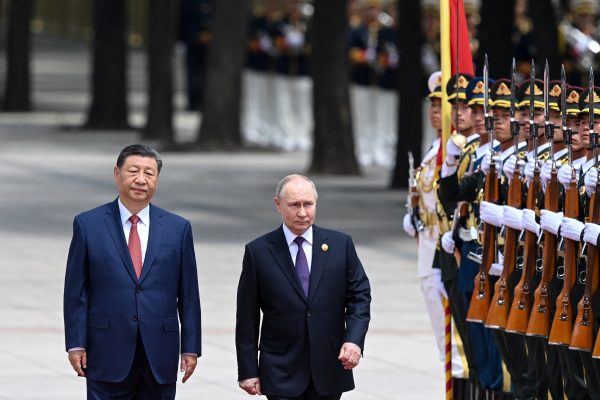Ukraine may still be basking in warm temperatures, but the balmy November weather is cold comfort to thousands of people fearing another winter without electricity, heating, and water.
The memory of last winter is still fresh in the minds of Ukrainians who were subjected to a months-long barrage of missile and drone attacks that wiped out more than half of the electricity generation capacity and transmission lines and thus compounded the occupation of key power facilities such as the giant Zaporizhzhia nuclear power plant.
Russia has destroyed or occupied no less than 90% of Ukraine’s wind capacity, 50% of its solar plants, and targeted gas production fields in its resource-rich eastern provinces.
But even as the Kremlin unleashed its storm of destruction, Ukraine’s electricity engineers risked their lives, often dodging the missiles, to repair the infrastructure or working to adapt donated equipment to restore a minimum of comfort in people’s homes.
This summer, Ukraine has been successfully stockpiling resources, has raised internal gas production, and is prepared to increase imports of electricity from neighboring EU countries. A November 2 Financial Times report detailed how energy providers were installing concrete blocks and other obstacles around key machinery to protect from missile strikes.
By the start of November, the country had much more gas in storage than last year, reporting 16 billion cubic meters (bcm) in underground facilities, more than last year’s 14.7 bcm.
Part of the increase is due to dozens of domestic and foreign companies injecting gas into underground facilities, despite the risks.
Internal gas production has also been increasing, as the incumbent Naftogaz commissioned 54 new wells this year and hopes one day to cover internal demand exclusively from domestic output.
Power plant producers have also secured coal stocks in Poland, which are now being delivered. Traders say more could be secured in case of supply shortages.
Despite formidable threats, Ukraine commissioned a wind farm in May, with the turbines 100km (about 62 miles) from the frontline.
Electricity imports from neighboring Romania started this month and similar opportunities are expected to open up with other countries such as Hungary, Poland, or Slovakia.
Throughout the past months, Ukrainian and neighboring electricity transmission system operators have been working to increase the border transmission capacity up to 1.2GW for imports, enough to power around two million homes.
Yet, despite the hard work of Ukraine’s energy engineers and traders to protect the infrastructure and secure sufficient resources for winter, the country remains vulnerable to missile and drone attacks.
Ideally, it should decentralize its energy sector, establishing self-contained areas of production, which could cover demand in urban areas, for example.
The existing centralized system is vulnerable because any attack can disable the transmission of electricity over long distances, which is just what has happened since the start of the war.
Small-scale gas-fired turbines would be suitable because they could be deployed near centers of high demand and used to generate sufficient electricity for local needs.
However, Ukraine needs money to buy them and at least a year to install them from the moment the turbines are purchased.
This means that at least this winter, its transmission lines and power plants remain at risk and would need to be protected by air defenses.
Right now, only Kyiv benefits from a comprehensive anti-missile shield, but the country has another 45 cities with a population of 100,000 or more, which remain without protection.
The country relies on its nine remaining nuclear units, with a total installed capacity of 7.6GW, which generate a steady flow of electricity and need to be protected at all costs.
Prior to the start of the Russian attacks, Ukraine had 13.6GW of thermal capacity but that has been reduced to 4GW and further damage may leave it unable to respond flexibly to fluctuations in consumption.
The flip side of Russia’s war of aggression is that thousands of consumers, including large industrial facilities, were disconnected from the grid and around six million people fled the country after the start of the invasion.
As a result, demand for electricity fell by half compared to the pre-war period, which meant that the steep drop in supply could be more easily managed.
Even so, the electricity grid operator was forced to introduce rolling blackouts last winter to balance the system.
More recently, demand has been ticking up by 2%-3% a month, not least because some industrial activity, such as fertilizer production, has been ramping up.
Ukrainians showed exemplary resilience last winter, surviving in freezing temperatures without electricity, heating, and water.
They have done everything they can to ensure reserves and prepare for another difficult winter, but without additional air defense systems from the West (like Germany’s $1.1bn “winter package” announced in October) it might come to nothing.
Dr. Aura Sabadus is a senior energy journalist who writes about Eastern Europe, Turkey, and Ukraine for Independent Commodity Intelligence Services (ICIS), a London-based global energy and petrochemicals news and market data provider.
The views expressed are her own.
Europe’s Edge is CEPA’s online journal covering critical topics on the foreign policy docket across Europe and North America. All opinions are those of the author and do not necessarily represent the position or views of the institutions they represent or the Center for European Policy Analysis.





